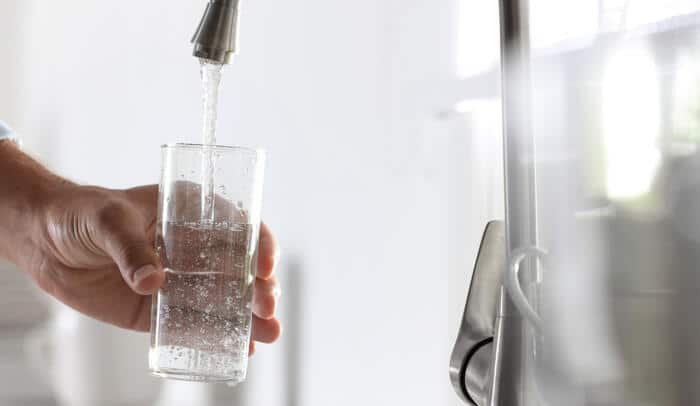The Ultimate Guide to Water Softeners and Softener Salt: Types, Costs & Buying Tips
If you’re tired of dealing with scale buildup, dry skin, and dull laundry, a water softener might be the solution you need. But choosing the right water softener system and the correct type of softener salt can be overwhelming, especially with so many options—salt-based, saltless, pellets, blocks, or tablets.
This complete guide will walk you through:
- What a water softener is and how it works
- Differences between salt vs saltless water softeners
- The best types of softener salts (and how to choose)
- Costs involved
- And tips for buying & maintaining your system effectively
Whether you’re looking for the best water softener salt, trying to understand the maintenance requirements, or simply want to buy water softener salt online, you’re in the right place.
Table of Contents
What Is a Water Softener?
A water softener is a filtration system designed to remove minerals like calcium and magnesium from hard water. These minerals can cause:
- Limescale in pipes and appliances
- Dry skin and hair
- Reduced soap efficiency
The most common types include:
- Salt-based (Ion Exchange) Water Softeners
- Salt-free (Descalers or Conditioners)
- Dual-tank or portable softeners
Types of Water Softeners
Salt-Based Water Softeners
These use softener salt to replace hard minerals with sodium ions through ion exchange. They’re effective and popular for whole-house systems.
Saltless Water Softeners
Also known as descalers, they condition the water without removing minerals. Ideal for those on sodium-restricted diets or eco-conscious households
What Is Water Softener Salt?
Softener salt is the consumable part of a salt-based system. It helps in recharging the resin beads that remove hard minerals.
Types of Softener Salt:
- Pellets: The most common and efficient
- Blocks: Suitable for high-usage systems
- Tablets: Smaller and easier to handle
- Salt tablets for water softener: Common in compact systems
Maintenance & Salt Delivery Services
To keep your system running smoothly:
- Check salt levels every month
- Clean the brine tank every 6–12 months
- Use high-purity salt to reduce buildup
Consider subscribing to a softener salt delivery service—convenient and often cheaper long term.
How to Choose the Right Softener Salt
Factors to Consider:
- Water hardness level
- Tank size
- Budget
- Salt purity
- Environmental impact
How does a water softener with salt work?
A water softener that uses salt removes the lime in the water using a process called ion exchange. This is when the water softener removes calcium and magnesium ions from your water and replaces them with benign sodium ions. Calcium and magnesium are the minerals that create lime scale.
In concrete terms, the tap water is passed through the water softener, travelling through a tube that is filled with resin granules. These resin granules act like a magnet and remove the calcium and magnesium from the water. When the resin granules are saturated, they must be renewed or regenerated.
This is where salt for water softening – or regeneration salt – comes in. Pouring salt into the container in the water softener creates a solution of salt and water. This ‘brine’ rinses or regenerates the resin granules in your water softener.
The calcium and magnesium ions are taken away to be discharged and the resin granules are then ready to soften the water again.
Salt for water softening
Salt for water softening reduces the hardness of water, and is indispensable to combat limescale build-up in (hot) water appliances. By investing in quality softening salt, your water softening system will work more efficiently and last longer.
Salt blocks for water softeners
Salt for water softeners comes in various shapes and sizes. There are roughly 3 types in the shops: salt tablets, salt crystals and salt blocks
It is safe to say that the type of salt for water softening does not make much difference to how it works. Salt tablets, salt blocks or salt crystals are all essentially… salt. The format does not impact on the quality of your water or the salt usage.
What is more important is the purity of the salt itself. There are several certificates that guarantee the quality of the salt you are buying. These certificates are usually indicated on the packaging.
Salt crystals are generally cheaper than salt tablets and are also more durable. Salt tablets or crystals cannot, however, be used in water softeners that work with salt blocks. Salt blocks are often made for use in specific brands or types of water softeners.
SOFT-SEL® LIQUID, liquid salt for water softening
For companies which require substantial amounts of softened process water, checking and replenishing the water softening systems can prove a time-consuming affair. Staff are forced to lug around heavy bags and the merest oversight can have a disastrous impact on the continuity of your production.
Moses has come up with the perfect solution for these tribulations. And you can take that quite literally. We deliver the salt in liquid form to your production site. The salt brine is automatically routed to the water softener by way of a tank. A great improvement for the ergonomics in your workplace.
Salt-free water softener
Nowadays, there are also water softeners that do not contain salt. Producers of these devices suggest they will save money because you no longer need to use salt. They might also say that this system means no salt ends up in the drinking water.
These suggestions, however, are both somewhat problematic. The salt water softening process never leaves salt in the water. Water softening is a closed process which means salt is never added to your drinking water.
Furthermore, a water softener that does not use salt does not soften the water as effectively. A lot more lime will be left in the water so the device is a little pointless. At the moment, a salt-based water softener is the best and most efficient method of softening your water.

